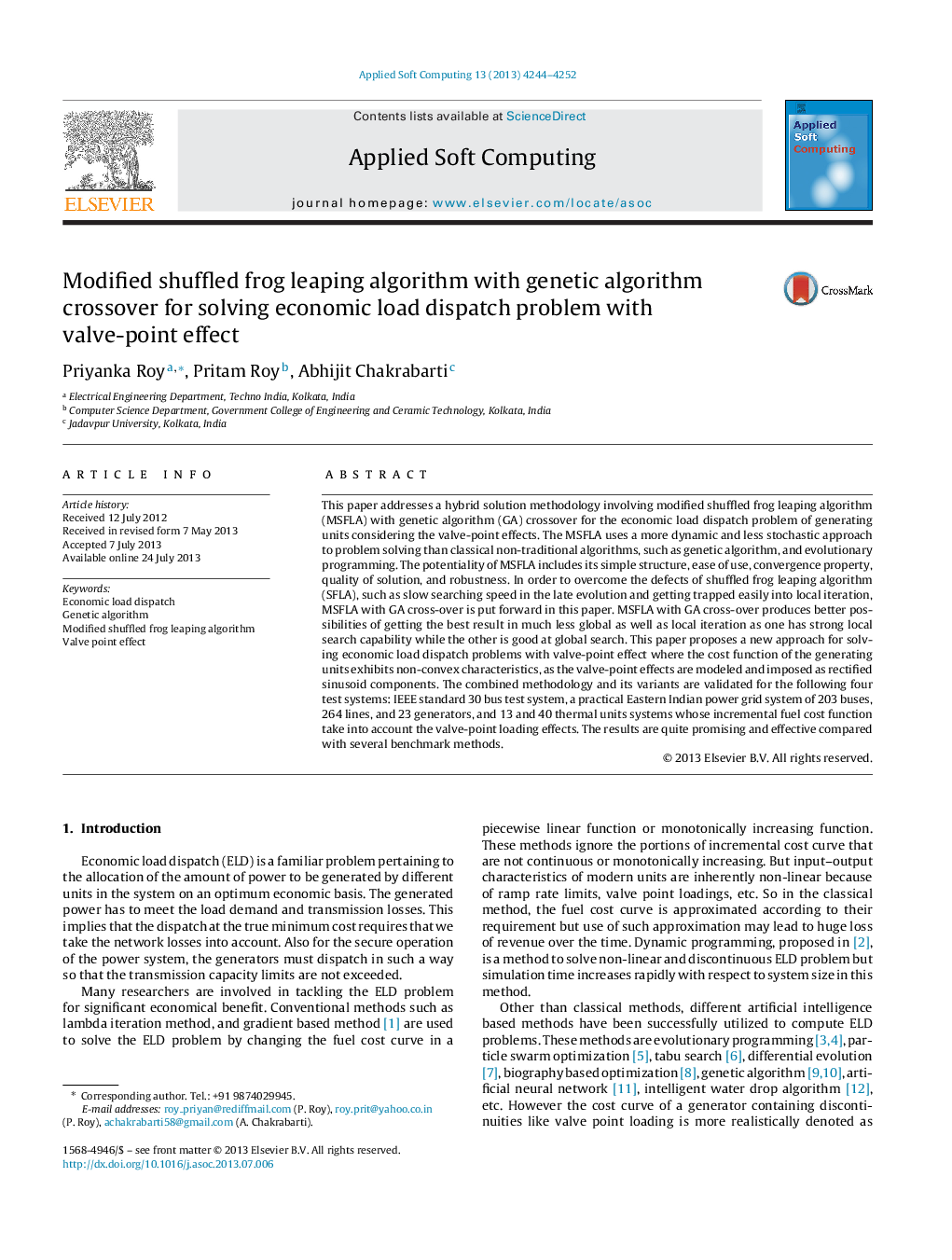| کد مقاله | کد نشریه | سال انتشار | مقاله انگلیسی | نسخه تمام متن |
|---|---|---|---|---|
| 495713 | 862835 | 2013 | 9 صفحه PDF | دانلود رایگان |

• Problem: economic load dispatch with valve point effect.
• Solution method: modified shuffled frog leaping algorithm (MSFLA) with genetic algorithm (GA) cross-over.
• Validated the proposed method with four test case system.
• The results are quite promising and effective compared with several benchmark methods.
This paper addresses a hybrid solution methodology involving modified shuffled frog leaping algorithm (MSFLA) with genetic algorithm (GA) crossover for the economic load dispatch problem of generating units considering the valve-point effects. The MSFLA uses a more dynamic and less stochastic approach to problem solving than classical non-traditional algorithms, such as genetic algorithm, and evolutionary programming. The potentiality of MSFLA includes its simple structure, ease of use, convergence property, quality of solution, and robustness. In order to overcome the defects of shuffled frog leaping algorithm (SFLA), such as slow searching speed in the late evolution and getting trapped easily into local iteration, MSFLA with GA cross-over is put forward in this paper. MSFLA with GA cross-over produces better possibilities of getting the best result in much less global as well as local iteration as one has strong local search capability while the other is good at global search. This paper proposes a new approach for solving economic load dispatch problems with valve-point effect where the cost function of the generating units exhibits non-convex characteristics, as the valve-point effects are modeled and imposed as rectified sinusoid components. The combined methodology and its variants are validated for the following four test systems: IEEE standard 30 bus test system, a practical Eastern Indian power grid system of 203 buses, 264 lines, and 23 generators, and 13 and 40 thermal units systems whose incremental fuel cost function take into account the valve-point loading effects. The results are quite promising and effective compared with several benchmark methods.
Figure optionsDownload as PowerPoint slide
Journal: Applied Soft Computing - Volume 13, Issue 11, November 2013, Pages 4244–4252